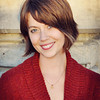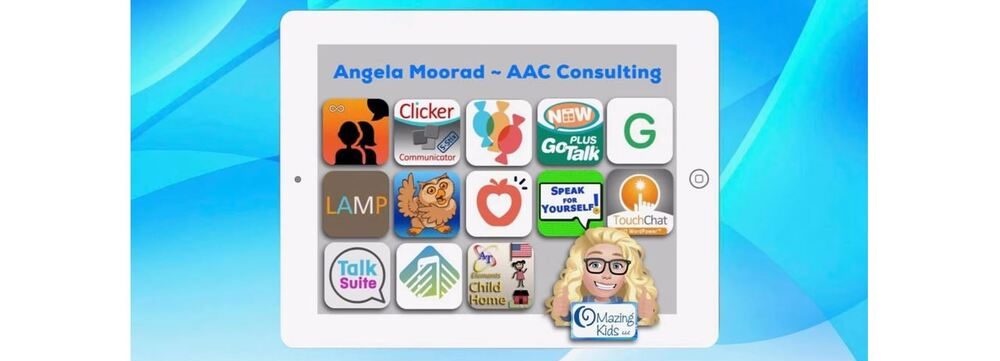
Childhood Apraxia of Speech and the Benefits of Guided Relaxation/Yoga
By Leslie Lindsay, R.N., B.S.N.
When my daughter was in preschool, she came home with a CD that was intended to help kids transition from one activity to another. It wasn’t your typical “Clean up” or “Good-bye” CD, either. Dubbed as “The Calm Classroom,” this program is designed to help kiddos stop and take inventory of their body, their breathing, their proprioception (sense of body position and motion from joint and muscle receptors), and vestibular stimulation (sense of gravity and motion that comes from receptors of the inner ear) through simple yoga poses, focused listening, and breathing techniques.
Being the type of parent who is open to all things that would better my child—or myself as a parent—I was all about trying the new CD. We popped it in the stereo in our family room at first, all four of us lying on the floor in effort to relax and focus. My daughter, who suffers from childhood apraxia of speech (CAS)* and wasn’t speaking much—but understanding plenty—skipped to the track she liked best: environmental sounds. The purpose of this track is to relax and focus on sounds in the environment such as a rushing train, frogs croaking, water dripping, and ____. She loved this and soon we were all experiencing greater focus and relaxation.
But just why was The Calm Classroom so effective for my daughter? And what does childhood apraxia have to do with it, anyway? For those of you who aren’t familiar, CAS is a neurologically-based motor speech disorder. Rooted in the brain, but expressing itself in the verbal communication (or lack thereof) of children, CAS is a complex disorder characterized by the inability to produce verbal sounds to form intelligible words. Here is the definition offered by ASHA in 2007, “A neurological childhood (pediatric) speech sound disorder in which precision and consistency of movements underlying speech are impaired in the absence of neuromuscular deficits.” In plain language, children with apraxia of speech want to speak, yet they just can’t coordinate their thoughts with their mouth.
In the exercises provided on the Calm Classroom CD, my daughter was able to become more self-aware. She was able to make the brain-body connection that is so vital in a neurologically-based motor speech disorder. Not only that, but some of the tracks require chanting or mantra style vocalizations (humming, buzzing), which is all a part of early communication. And—there is a good deal of breath awareness in these exercises and any yoga practice. Finally, the repetitive aspects of relaxation exercises and yoga poses are key: the body craves repetition to gain mastery over motor-based movement. These very same principles can be applied to speech-language pathology, and specifically childhood apraxia (CAS).
If you feel like this is a path you would like to explore, look to see if your child’s speech clinic offers occupational therapy, sensory integration therapy, or yoga. It really can be quite beneficial to children of all ages with all types of motor speech disorders. Worst case scenario: your child has tapped into a new coping strategy that may prove helpful for the future.
The Calm Classroom went into retirement for awhile at our house until just recently, when our now-7-year old daughter rediscovered it. She suggests we join her in a type of relaxation class in which we all are all provided with a note card to collect punches–much as we would if we were taking a class at a health club. Of course, this is all her design. And this time around, she is speaking quite normally and will be in 2nd grade, “Come on! Don’t you want to relax, mom and dad?! It will do you some good.” My husband and I just look at each other with that, oh-what-have-we-got-to-lose look and give in to her request.
And you know what, she was right.

*Childhood apraxia of Speech (CAS) is sometimes referred to as “developmental apraxia” in countries other than the U.S., and in the U.S. before 2007.
Bio: Leslie Lindsay is former child/adolescent psych R.N. at the Mayo Clinic-Rochester. She is the mother of two school-aged daughters and a basset hound, named Sally. Lindsay and her family reside in the Chicago suburbs where she writes full-time. She is the author of “Speaking of Apraxia: A Parents’ Guide to Childhood Apraxia of Speech” (Woodbine House, March 2012). Read more on her blog, “Practical Parenting…with a Twist” where she writes about apraxia, parenting, education, and more 5 days a week, www.leslie4kids.wordpress.com


Information about The Calm Classroom: For more information about the research-based Calm Classroom program mentioned in this article, please visit their website, http://calmclassroom.com.
Disclaimer: The author has no professional affiliation with The Calm Classroom/Luster Learning. This article is for information and entertainment purposes. It is not meant to be a “cure” for Childhood Apraxia of Speech (CAS). The most effective treatment for CAS is a multidisciplinary approach which encompasses motor, sensory, and speech work. All children with CAS present in their own unique ways; not all will respond as positively to yoga or relaxation-type exercises. The key is finding that perfect fit for your child.
References:
Kurtz, Lisa A. Understanding Motor Skills in Children With Dyspraxia, ADHD, Autism, and other Learning Disabilities. Jessica Kingsley Publishers, 2008.

Note from OMazing Kids: I greatly appreciate Leslie sharing her daughter’s experiences with relaxation & yoga! Her book is FABULOUS… see my review at: http://wp.me/p1t7TU-x1.
Do you have a child with special needs who has benefited from relaxation, yoga or other wellness activities? We would love to hear your story! Feel free to share it in the comment section below 🙂

Angela Moorad, MS, CCC-SLP, IAYT, RCYP-2
Speech-Language Pathologist at the JD McCarty Center (http://www.jdmc.org/)
Founder of OMazing Kids, LLC – inclusive wellness activities for kids of all abilities
Radiant Child Yoga Certified – Levels 1 & 2
E-Mail: amoorad1@juno.com
Facebook: http://www.facebook.com/OMazingKidsYoga
Twitter: http://twitter.com/#!/amoorad
YouTube: http://www.youtube.com/user/amoorad1
Pinterest: http://pinterest.com/OMazingKids/
Blog: http://omazingkidsllc.com
NOTE: Please ignore any ads that appear below the wavy divider bar. This is a free blog site & I have no control over ads appearing here.
![]()
